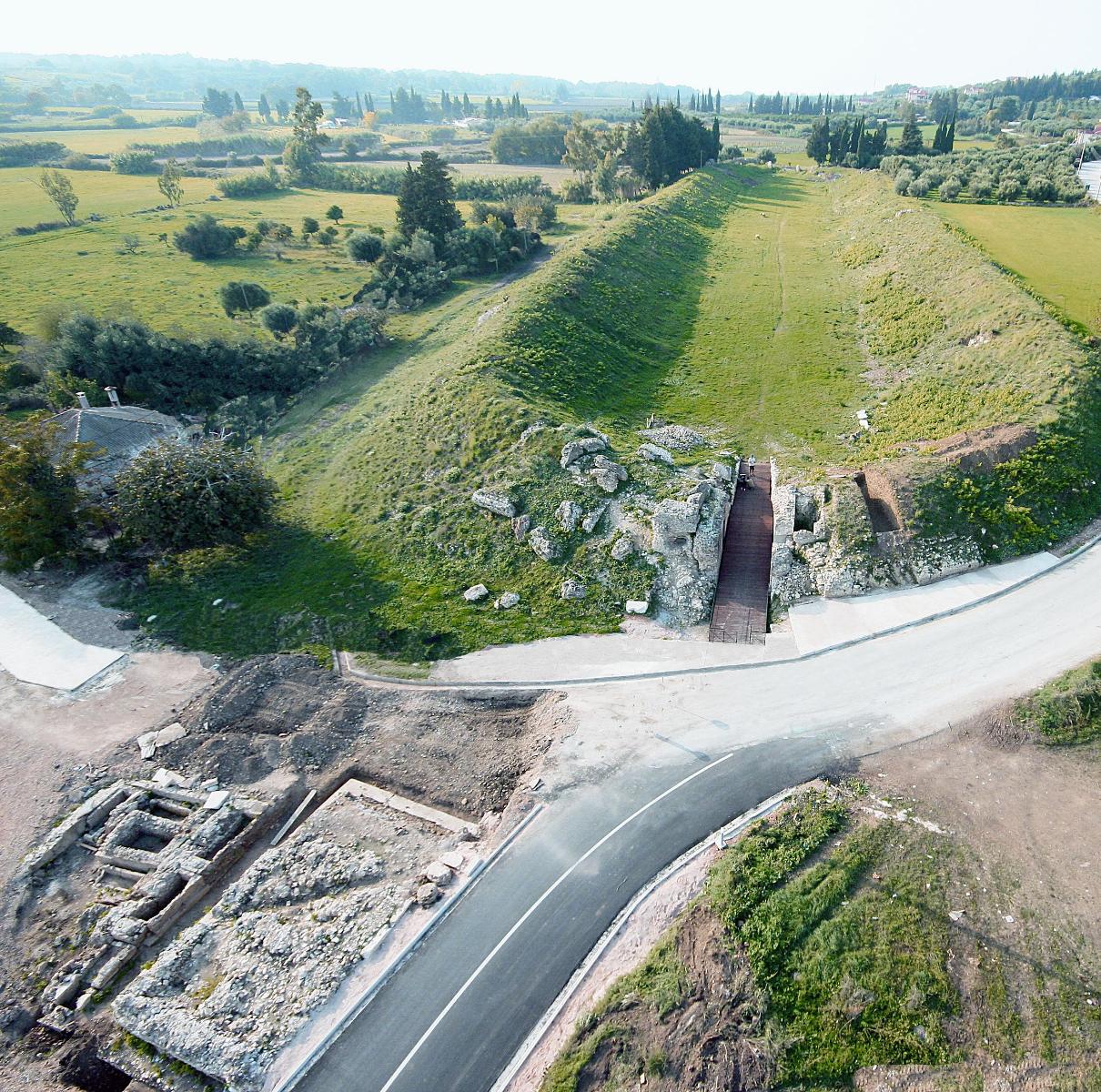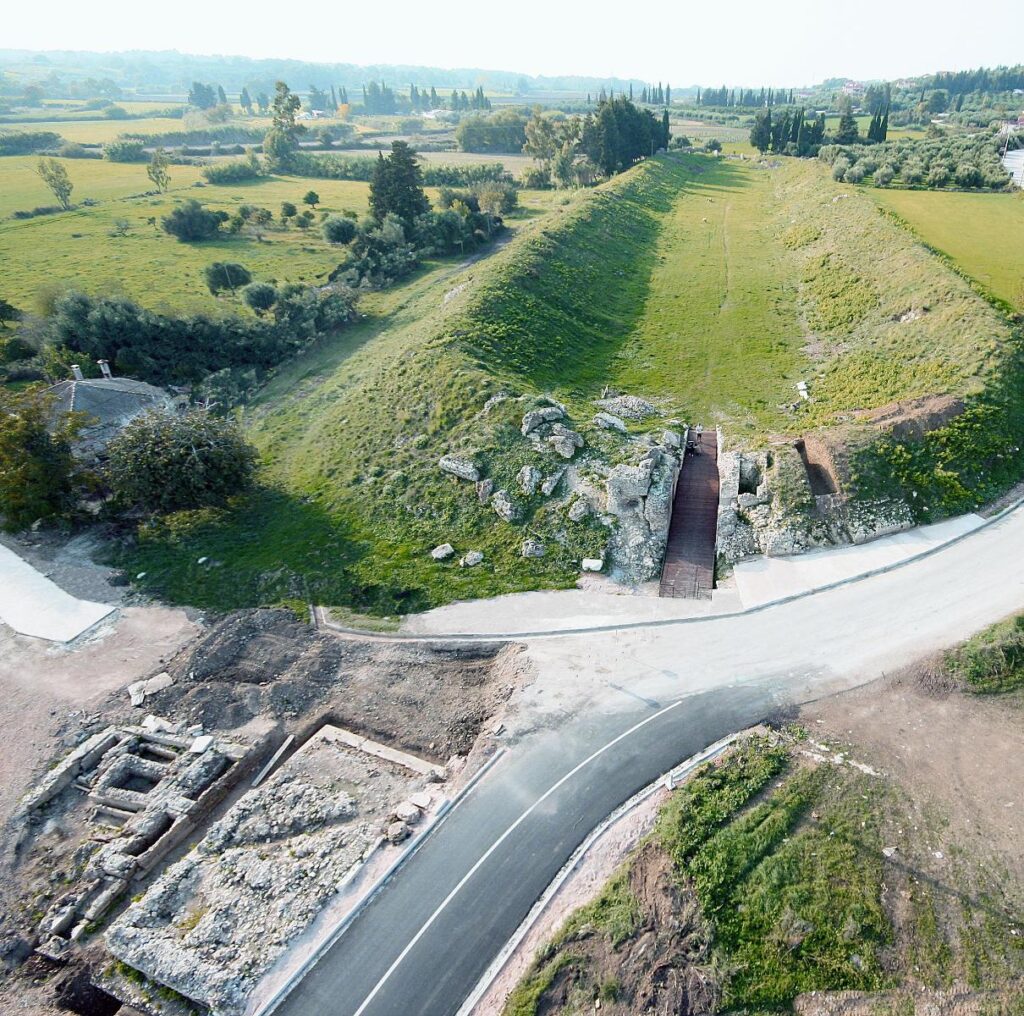A few meters from the east sphendone of the Stadium, excavation uncovered two grave monuments-mausoleums which formed part of a group of tomb monuments, the total number of which remains unknown. This was an important cemetery, since it was set in a prominent location inside the precinct where the sacred games were held. The two mausoleums lay approximately parallel to one another.
The northern one was temple-form and stood on a podium like Roman temples. Only its podium survives: it had a concrete core and stone facing, from which the euthynteria, a base with a concave-convex molding, and orthostates survive. On the west side of the building steps led to the pronaos, which on the basis of a column capital found in excavation is thought to have been Ionic. In the monument’s burial chamber there must have been stone sarcophagi on a platform around the perimeter, as is observed in similar funerary monuments in the north cemetery of Nicopolis. The mausoleum dates to about the second half of the 2nd century AD.
The second mortuary building, which is only a meter south of the first one, was rectangular in plan and built of brick. Its north wall had buttresses, among which three brick cist tombs have been found. Of the graves inside the burial chamber, four undecorated stone sarcophagi and a brick-built cist tomb survive.
Between the two mausoleums, five fragments of a marble sarcophagus with relief decoration were found. On three sides of the sarcophagus, the labors of Heracles are depicted in high relief. The sarcophagus contained at least three disturbed burials, the earliest of which dates to the second half of the 2nd century AD, i.e. it was contemporary with the construction of the sarcophagus.
A few meters northeast of the temple-form mausoleum, the wall of a third, brick-built mausoleum was identified. It is considered certain that in this same direction (towards the Theater) there are other grave monuments still covered by fill. These luxurious funerary monuments must have belonged to prominent members of the local community who were directly connected with the organization and administration of the Actian Games.




